5 Ways Business Owners Can Optimize Retirement Savings
As a business owner, you have the ability to pull certain levers to increase retirement savings while controlling tax consequences. By understanding the features and benefits of different retirement plans, you can optimize cash flow for your tax-preferenced savings for the future.
$20,500 Retirement Savings and Tax Strategies
A Safe Harbor 401(k) is a type of retirement plan that allows employers to max out their annual salary deferral. As the owner, you can defer up to $20,500 in salary in either:
Pre-tax 401(k). Take the income tax deduction today and push the taxes to the future.
PRO TIP: If your marginal tax bracket is near a threshold that could affect other tax liabilities, take the salary deduction to stay below the cut off.
Roth contribution. Pay the taxes now. Your account grows tax-free; and when you access your account in retirement, it is also tax-free. Of course, your 401(k) plan would need to allow for a Roth contribution.
PRO TIP: Having access to tax-free money in retirement allows you to adjust your taxable income up and down based on your future needs.
For people over 50 years old, you can also add a “catch-up” contribution of $6,500 annually to your account.
To get these benefits, employers must also make a contribution on behalf of their employees. Generally speaking, a Safe Harbor contribution costs the employer between 3 – 4% of gross eligible salaries. From a tax planning perspective, these contributions are deductible on the company’s federal income tax return.
For employers that want to max out their own 401(k) annual deferral, avoid certain plan design tests, and provide an incentive for employees to save for retirement, a Safe Harbor 401(k) Plan may be the answer.
$61,000 Retirement Savings and Tax Strategies
For owners looking to save more, around $61,000 per year to be exact, there is the 401(k) Cross Tested / New Comparability Plan option. This calculation method combines the 401(k) with a profit share. Profit sharing employer contributions are generally tax deductible.
What makes these plans unique is that business owners can designate certain groups of their employees to participate in the profit sharing portion of the plan, while others will receive a smaller or no contribution. But, the plan will need to be tested to ensure the benefits do not discriminate too heavily in favor of highly-compensated employees.[1]
These plans are also flexible, meaning that employers can set when and how much to contribute to these plans each year. Contributions limits are the lesser of 100% of compensation or $61,000 for 2022 (and $67,500 if over 50 years old). [2] These plans are more complicated and thus typically cost more to administer.
Taxed Now, Flexibility Later
If the ability to adjust your taxable income sounds interesting, then a Roth Conversion may be worth exploring.
With respect to 401(k) plans, it is the transfer of funds from a traditional pre-tax 401(k) into a Roth 401(k). Account owners pay tax on the money they convert and are eligible to make tax-free withdrawals in the future. From a tax planning perspective, this approach requires taxes to be paid up-front versus when you retire. This can be helpful if you have highly variable income year over year or you expect to be in a higher tax bracket at retirement.
PRO TIP: If your taxable income is between marginal tax brackets, consider converting the amount that reaches the upper limit. This strategy doesn’t trigger a higher tax bracket and may help with future tax planning.
Roth IRAs are also not subject to required minimum distributions. [3]
$200,000 Retirement Savings and Tax Planning
Feeling behind and looking for the chance to supercharge your retirement savings? Then a Cash Balance plan may be the right option for you.
Cash Balance plans are best for owners who:
Have steady and consistent revenue
Want to be able to save upwards of $200,000 per year consistently
Already contribute 3% or more towards employee retirement benefits
Are comfortable with advanced plan design
Pre-tax contributions to a Cash Balance plan are an above-the-line tax deduction. Keep in mind, however, that the investment risks within the plan are borne solely by the employer. So, it’s very important that you understand the details of a Cash Balance plan before implementing one.
Triple Tax Savings
For employers with a high-deductible health plan, you can also offer a triple tax-free savings opportunity to your employees: a Health Savings Account (HSA). These accounts are funded with pre-tax dollars, grow tax-free, and allow income tax-free distributions (when spent on qualifying medical expenses). Note, these deductions apply to federal income tax only.
For 2022, the HSA limit for is $3,650 for individuals and $7,300 for families. HSA dollars can be invested in the stock market, which means they will likely grow over time. Therefore, if you start saving through your HSA as part of a retirement planning strategy, you could have access to a bucket of tax-free money for medical expenses in retirement. With the average American’s lifetime health care costs equal to $300,000, wouldn’t it be nice to have a triple tax-free medical savings opportunity?[4]
Worth a Conversation
With so many different retirement savings options available for business owners, it’s important to work with a qualified financial advisor. We can help you set up the right plan(s), discuss tax planning strategies, and help you find the best option to optimize your retirement savings.
[1] Internal Revenue Service. “Choosing a Retirement Plan: Profit-Sharing.” 2022.
[2] Internal Revenue Service. “Choosing a Retirement Plan: Profit-Sharing.” 2022.
[3] Kagan, Julia. “Roth IRA Conversion.” Investopedia. 5 Mar. 2022.
[4] “How to Plan for Rising Health Care Costs.” Fidelity. 25 May 2022.

